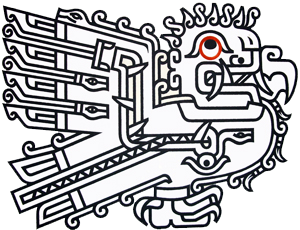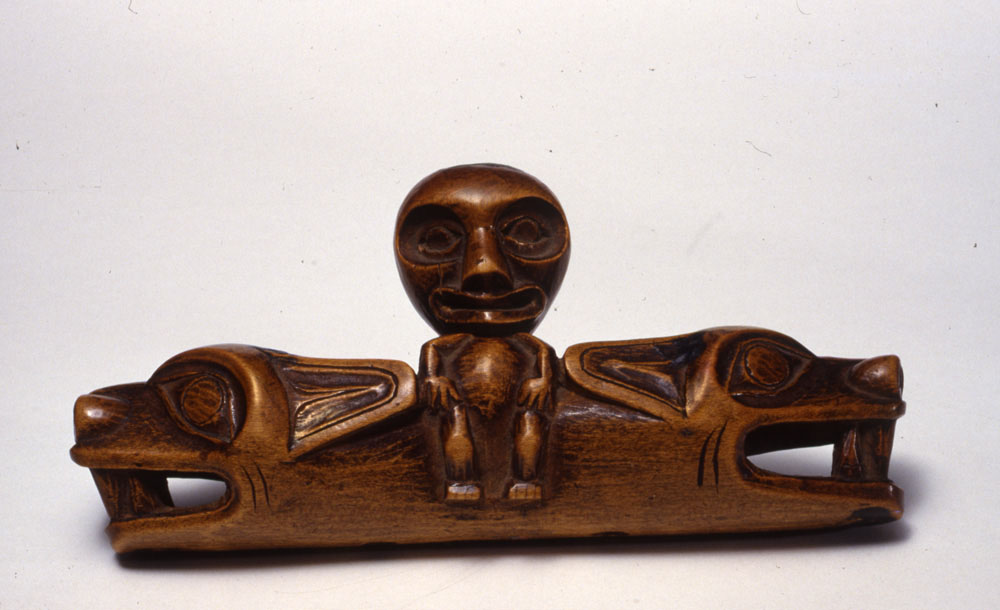Descripción
- Número de la foto:: INW-126A-69
Las leyendas solo están disponibles en alemán o inglés
This soul catcher, representing the two-headed sea monster Sisiutl, belonged to a Haisla shaman from Kitlope, located on the Gardner Canal. If the shaman was successful in recovering the patient's lost soul during the healing ritual, he would keep it in the body of the small human figure, whose head is removable, and return it to the patient. (16 cm; MOA)
MOA = Museum of Anthropology, University of British Columbia, Vancouver





